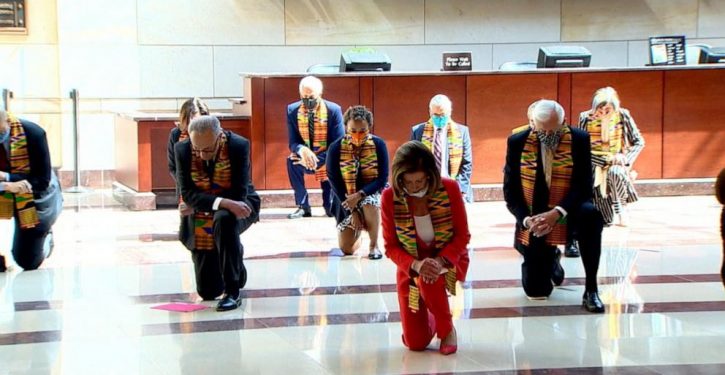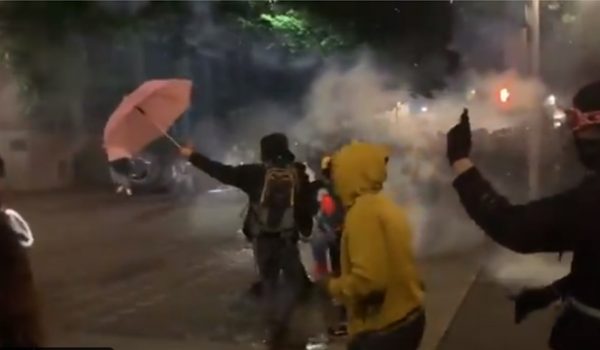
Congressional Democrats just introduced the Justice in Policing Act of 2020. The bill was proposed after the horrific killing of George Floyd in Minneapolis. It encourages police departments to adopt quotas based on gender and race for “traffic stops,” “pedestrian stops,” and “interviews.” The practical effect would be to encourage police departments to stop innocent women, Asians, and perhaps whites, just to meet quotas based on gender and race. If police departments don’t meet these quotas, they will be subject to lawsuits by the Justice Department and individuals who are stopped by the police.
Section 311 of the Act forbids what it calls “racial profiling.” This is defined to include not just race, but also “gender” in Section 302(a)(6) of the bill. And effectively, what matters is numbers, not just racism or sexism. “Disparate impact” in police stops or interviews based on race or gender — for example, stopping more men than women, or interviewing more blacks than Asians or whites — is defined as “prima facie evidence” of a “violation.” That means that numbers alone are enough for a judge to find a police department in violation of the Act. Prima facie evidence is a legal term meaning that the person suing has provided enough evidence to prove something, in the absence of proof to the contrary by the entity being sued, which bears the burden of proving itself innocent, once prima facie evidence is shown.
This would render all police departments presumptively in violation of the Act, because men speed more than women virtually everywhere (which is one reason that auto insurance companies charge men more than women — men are more likely to get into a destructive high-speed crash), and men commit crimes at a higher rate. There are also racial differences in crime rates: Asians have the lowest crime rate, on average, while blacks generally have the highest, and whites and Hispanics tend to be in the middle.
Will this presidential election be the most important in American history?
So all police departments everywhere are presumptively guilty under the bill. And the bill doesn’t explain how they can rebut this presumption of guilt or prove themselves innocent. (The bill does say that police can search for offenders of particular races if an offender with that racial characteristic was involved in an “identified criminal incident.” But speeding is usually not a criminal offense).
So if they wish to avoid being sued, and avoid being forced to pay the attorneys fees and expert-witness costs of the person suing them, police departments have an incentive to stop only as many men as women — even if more men are speeding or committing crimes — and to adopt racial quotas in police stops.
That could undermine road safety by encouraging police to ignore speeding or other violations just because they were committed by members of a particular gender or race.
That pressure on police to make gender-based and race-based decisions seems constitutionally problematic. For example, an appeals court ruled it was unconstitutional to require a local government not to punish a higher percentage of one race than another race because that amounted to a racial quota. The court struck down as unconstitutional a provision that forbade a “school district to refer a higher percentage of minority students than of white students for discipline unless the district purges all ‘subjective’ criteria from its disciplinary code,” concluding that that constituted a forbidden racial quota. As it noted, “Racial disciplinary quotas violate equity” by “either systematically overpunishing the innocent or systematically underpunishing the guilty.” (People Who Care v. Rockford Bd. of Educ., 111 F.3d 528, 538 (7th Cir. 1997)).
One could argue that the Justice in Policing Act only encourages — rather than requires — quotas because numbers amount only to “prima facie evidence,” not conclusive evidence. But it still creates problems because even mere incentives to have quotas can run afoul of the Constitution. An appeals court ruled that it is unconstitutional to incentivize racial and gender quotas through investigations and audits, even if they aren’t strictly required. (See Lutheran Church-Missouri Synod v. FCC, 141 F.3d 344 (D.C. Cir. 1998).
The bill’s encouragement of quotas is reinforced by other provisions of the bill. Section 114(d)(1)(C) funds pilot programs based on factors such as whether a police department avoids “disproportionate minority contact.” But there is nothing nefarious about “disproportionate minority contact,” if victims and offenders are disproportionately black. Blacks are disproportionately victims of crimes, usually committed by other black people. The FBI says that 47% of murderers and 45% of murder victims were black in 2018, even though blacks make up only 13% of the U.S. population. Eighty-nine percent of black victims are killed by black offenders.
So cutting “disproportionate minority contact” could harm minorities most.
Section 114(d)(2)(A) encourages pilot programs that promote “the hiring and recruitment of diverse law enforcement officers representative of the communities they serve.” Many police departments are already racially diverse: As Axios notes, “Nationally, over 15% of law enforcement is black — a bigger share than the black U.S. population,” which is only 13%.
Moreover, an appeals court ruled that a city could not promote blacks based on their race “to give a better reflection of the racial composition of the city,” since this was too close to being a racial quota. (See Police Association of New Orleans v. City of New Orleans, 100 F.3d 1159, 1169 (5th Cir. 1996)).
Quotas won’t reduce police violence: “White officers are no more likely than black or Hispanic officers to shoot black civilians,” notes the Manhattan Institute. And two of the four officers charged in connection with the death of George Floyd are non-white.
This diversity provision may aim at gender diversity, rather than just racial diversity. But gender quotas are also constitutionally forbidden.
Courts have struck down gender-balance requirements for government boards, concluding that they are illegal quotas that violate the Constitution’s equal protection clause. (See, e.g., Back v. Carter, 933 F.Supp. 738 (N.D. Ind. 1996).)
They also have struck down requirements that regulated entities (such as private companies) adopt racial or sexual quotas, or gender-balance requirements, governing their own work forces. (See, e.g., Lutheran Church-Missouri Synod v. FCC, 141 F.3d 344 (D.C. Cir. 1998)).
Expecting a police force to be as heavily female as the general labor force is also unrealistic. Women tend to be smaller and have less upper body strength than men do, making it harder for a female cop to subdue a suspect without using lethal force than it is for a man. There are many women who can overcome this handicap to become a good cop (as a result, women who actually choose to become cops are as good as the average male cop — female cops seem to have certain compensating advantages.)
But there are many other women who cannot do this. Trying to make them become cops through a gender quota would be a big mistake.




